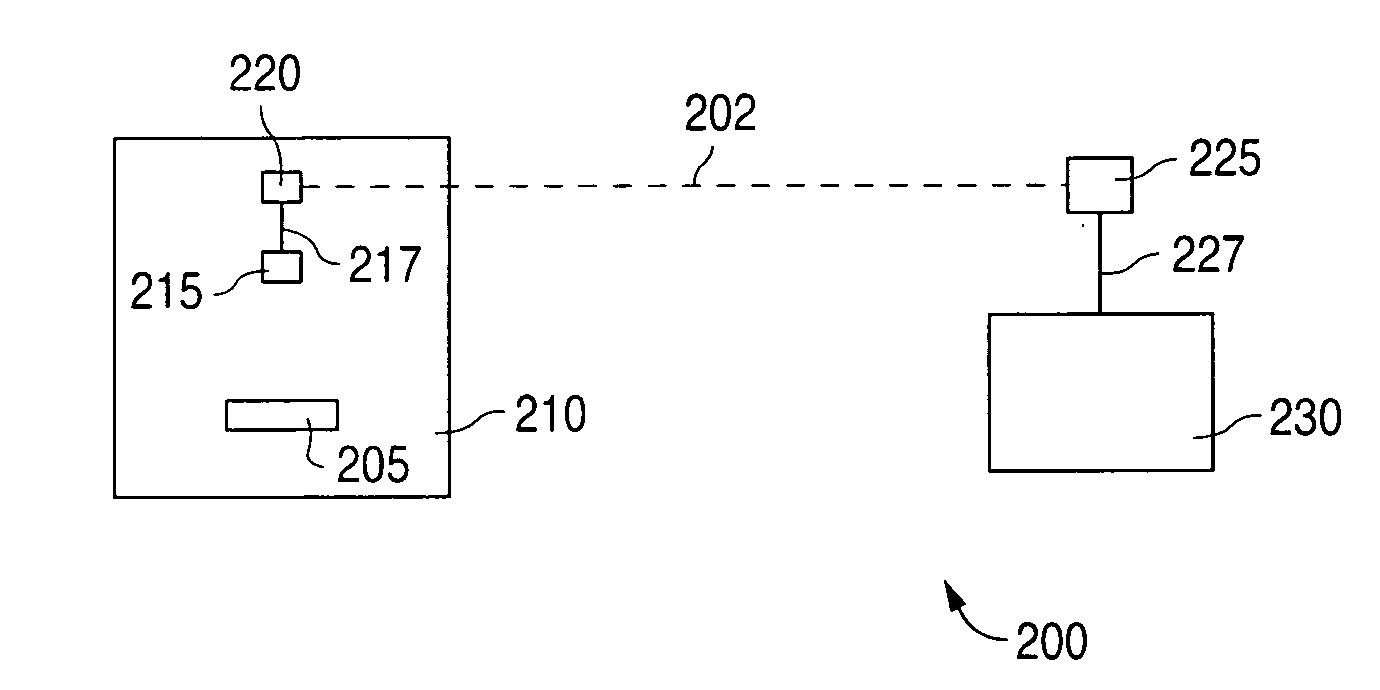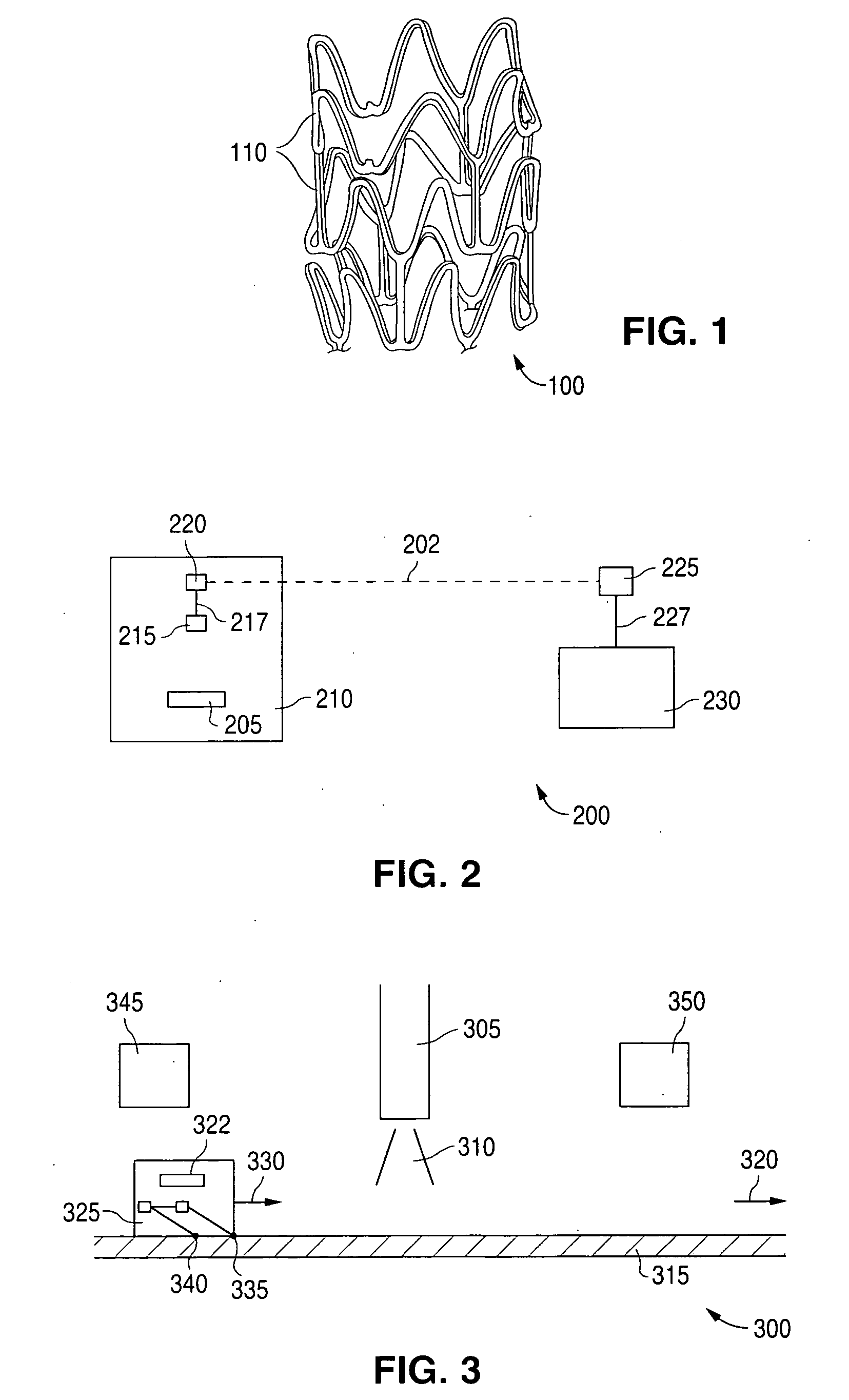Radio frequency identification monitoring of stents
a technology of radio frequency identification and stents, applied in the field of radio frequency identification monitoring of stents, can solve problems such as negative effects on mechanical properties and drug delivery, for exampl
- Summary
- Abstract
- Description
- Claims
- Application Information
AI Technical Summary
Benefits of technology
Problems solved by technology
Method used
Image
Examples
Embodiment Construction
[0022]Various embodiments of the present invention relate to monitoring conditions of polymeric implantable medical devices, particularly stents, during manufacturing, storage, and transportation. The conditions of a stent can be monitored using Radio Frequency Identification (RFID) technology. RFID technology is known in the art. A significant advantage of the present invention is that it allows monitoring, storage, and analysis of the environmental exposure of a specific stent during all or part of the period of time between laser cutting to implantation.
[0023]The method and systems described herein may be may be applied in generally to implantable medical devices. The methods and systems are particularly relevant, for reasons discussed below, to implantable medical devices having a polymeric substrate, a polymer-based coating, and / or a drug-delivery coating. A polymer-based coating may contain, for example, an active agent or drug for local administration at a diseased site. An i...
PUM
 Login to View More
Login to View More Abstract
Description
Claims
Application Information
 Login to View More
Login to View More - R&D
- Intellectual Property
- Life Sciences
- Materials
- Tech Scout
- Unparalleled Data Quality
- Higher Quality Content
- 60% Fewer Hallucinations
Browse by: Latest US Patents, China's latest patents, Technical Efficacy Thesaurus, Application Domain, Technology Topic, Popular Technical Reports.
© 2025 PatSnap. All rights reserved.Legal|Privacy policy|Modern Slavery Act Transparency Statement|Sitemap|About US| Contact US: help@patsnap.com


